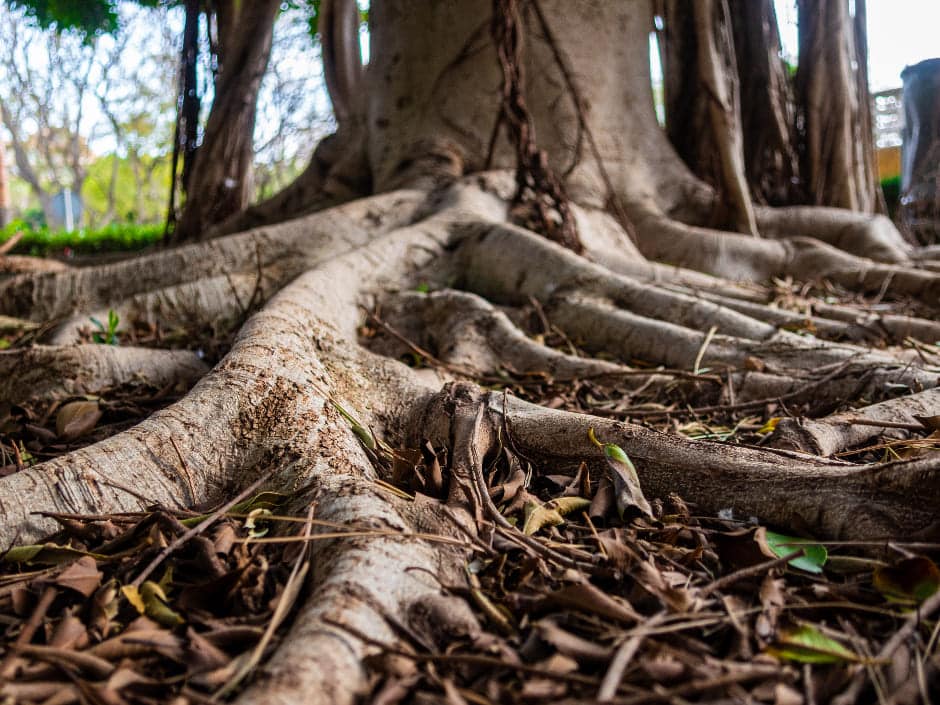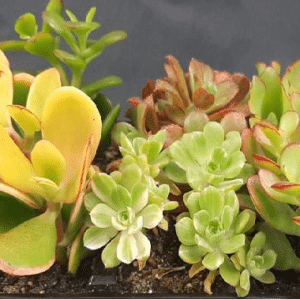Understand your tree’s root system
DIY and how-to

Planting trees helps secure a greener future for the earth and its inhabitants (including you). But before you add one to your garden this Arbour Week, it’s essential to have a solid understanding of the tree’s root system.
Planting a tree isn’t just a case of picking a nice spot and popping the sapling into the ground – the tree’s roots play a key role in nutrient uptake, water intake, stability, and overall health. Planting your tree in the wrong place could prevent it from thriving and doing the good it was designed for.
This article looks closely at the essential factors contributing to planting success.
The foundation of life
A tree’s root system is its lifeline, anchoring it to the ground and helping it to absorb essential nutrients and water from the soil. And the roots aren’t just a tangled mess beneath the tree; they’re organised in a way that maximises efficiency and sustenance.
Trees can have different types of root systems, and factors such as tree species, soil conditions, and environmental constraints often influence their form.
The two primary types of root systems are:
- Taproot: Some trees have a system where a primary, thick root grows deep into the soil. Smaller lateral roots spread out from this taproot, searching for nutrients and water. While taproots provide excellent stability, they can be challenging to transplant successfully.
- Fibrous: Other trees have fibrous root systems. Numerous fine roots spread out horizontally near the soil surface in this arrangement. Fibrous roots are better suited for transplanting and are adept at absorbing moisture from the top layer of soil.
Space requirements
Trees need their space! Just like you appreciate having enough room to stretch your legs, trees require ample space for their root systems to spread out comfortably.
It’s, therefore, essential to research the specific tree species you’re planting to understand its mature size and root development. Planting too close to structures can lead to cramped root growth and potential damage to the tree and the nearby structures.
Planting depth matters
When planting a tree, the depth at which the root ball is placed in the ground significantly impacts its growth and survival.
The tree may struggle to access oxygen and nutrients if planted too deep, leading to stunted growth or even death. In turn, planting too shallowly can expose the roots to harsh weather conditions and destabilise the tree.
Proximity to other structures
When planting a tree, consider the structures nearby. Tree roots can exert pressure on foundations and underground pipes over time, potentially causing damage. Keep a safe distance from buildings, driveways, and utility lines, as this will save you costly repairs down the road.
Soil quality
The saying “you are what you eat” applies to trees, too – they’re greatly influenced by the soil they’re planted in. Before planting, assess your soil’s drainage, texture, and nutrient content.
Well-balanced soil enriched with organic matter will provide the tree’s roots with the right environment to establish itself and grow.
Proper watering techniques
Establishing a robust root system requires a careful balance of watering. Overwatering can suffocate the roots by filling the airspaces in the soil, depriving them of oxygen. Conversely, underwatering can lead to dehydration and stress.
It’s best to water deeply and less frequently, encouraging the roots to grow deeper into the soil in search of moisture.
Drainage
Proper drainage is another factor crucial for the tree’s success. Tree roots need oxygen as much as they need water and poorly drained soil can lead to root rot and suffocation, stunting the tree’s growth and vitality.
Add a fruit tree and eat from your garden
Fruit trees generally have a combination of surface and deeper roots. The surface roots are responsible for absorbing nutrients and water from the topsoil. In contrast, the deeper roots provide stability, anchor the tree, and access water and nutrients from deeper soil layers.
When planting fruit trees, dig a square hole measuring about 60x60cm instead of a deep cylinder. If space is limited, you can grow your fruit trees in pots – mini or dwarf varieties typically grow well in containers.
Pear, orange, lemon, stone fruit, fig, and cherry trees are also fruit trees that grow well in pots. But size matters! Plant your trees in the biggest possible container your space and budget allow. The bigger the area the roots have to grow, the bigger the tree and harvest will be.
These are some of our favourite fruit trees and their root patterns:
- Plum trees: The roots typically exhibit a spreading and shallow growth pattern, extending horizontally rather than diving deep.
- Avocado trees: Their roots are characterised by an extensive, fibrous network that tends to stay close to the soil surface, making avo trees vulnerable to disturbance. These roots have a high water-absorbing capacity, necessitating well-draining soil and careful watering to prevent root rot.
- Orange trees: Citrus trees’ roots typically display a combination of shallow and deep growth, with surface roots spreading widely and deeper roots providing stability and accessing water and nutrients.
Rooting for our trees
Understanding your trees’ root systems is fundamental to successfully planting and nurturing nature’s gentle giants. Remember, a solid foundation sets the stage for a thriving tree.
Take note: We’re offering Stodels Club Card holders a “buy one tree, get one free” promotion from 6-9 September 2023 to celebrate Arbour Week.* Happy planting!
*Both regions. While stocks last. Ts&Cs apply.
Read more:




